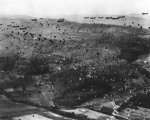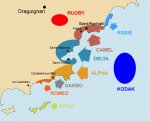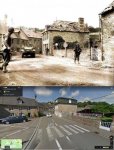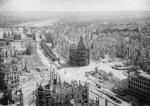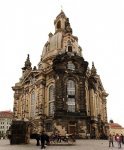August 15, 1944: It’s Tuesday - today is D+70, marking 10 weeks since the D-Day Invasion at Normandy and the beginning of the liberation of Europe.
The Falaise pocket is still not completely closed. East of Falaise, the Canadians and the Poles slowly push towards the town of Trun in a an attempt to prevent the escape of a greater number of German soldiers to the Seine river. Though Trun is reached today, fierce fights take place around the town, which is defended by elements of the German 7th Army. General Patton, who has awaits the order to close the pocket to the north, attacks southeast of Argentan, routing the German troops. The US 3rd Army’s XV Corps moves towards Dreux, just 50 miles east of Paris, while the US XX Corps (3rd Army) progresses towards Chartres. The XII Corps (3rd Army) attacks towards Orleans.
In Brittany, the fighting around the city of Brest continue. The US 83rd Infantry Division liberates the villages of Saint-Briac and Saint-Lunaire, which enables the Allies to inch closer of the city of Saint Malo, still fiercely defended by the Germans.
In southern France, Allied forces launch a secondary invasion of France (Operation Dragoon) between Toulon and Cannes. Most of the initial assaults are carried out by forces of US VI Corps as part of US 7th Army. Also included in the initial landings are French commandos. Three American division come ashore in the first wave at three beaches: Alpha Beach (US 3rd Division) on the left flank; Delta Beach (US 45th Division); and, Camel Beach (US 36 Division) on the right flank. In addition to the main landing sites, the airborne landing at Le Muy by 5,000 French troops inland from Delta Beach and a sea borne landing on Levante Island. Over 1,500 aircraft are engaged in air support for the operation. Admiral Hewitt commands the naval support, including 5 battleships, 7 escort carriers, 24 cruisers and 91 destroyers. There is almost no resistance to the landings. Allied forces suffer 183 casualties. Prime Minister Churchill is present during the initial landings, on board a destroyer offshore. The German forces in southern France consist of the 19th Army with 7 infantry divisions and the 11th Panzer Division.
Over Germany, US 8th Air Force attacks airfields with 707 bombers and RAF Bomber Command sends 32 aircraft to attack Berlin overnight.
Over the Netherlands, RAF Bomber Command sends part of a force of 1,004 aircraft to attack airfields and US 8th Air Force attacks Venlo with 104 bombers. Over Belgium, RAF Bomber Command sends the other part of a force of 1,004 aircraft to attack airfields while US 8th Air Force attacks Florennes with 59 bombers and attacks rail lines with 33 fighters.
Moscow informs US and British ambassadors of Soviet inability or unwillingness to assist the Polish Home Army battle in Warsaw.
Polish Home Army calls for all units outside Warsaw to break into the city to support the uprising. Allied Balkan Air Force sends 7 Polish and British bombers from Italian bases to drop supplies to Home Army outside Warsaw overnight.
In Italy, British 8th Army reorganizes in preparation for new offensive.
Pictured: German prisoners of war captured in Normandy are guarded by US troops at a camp in Nonant-le-Pin; The Riviera D-Day - Operation Dragoon hits southern France; The parachute drops of Operation Dragoon; Operation Dragoon landings


